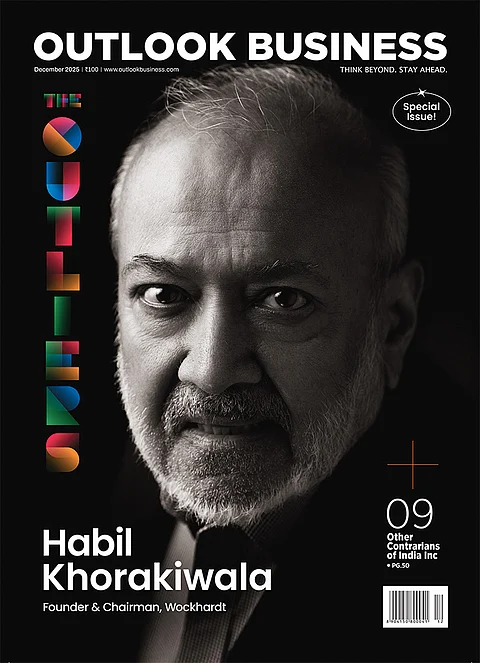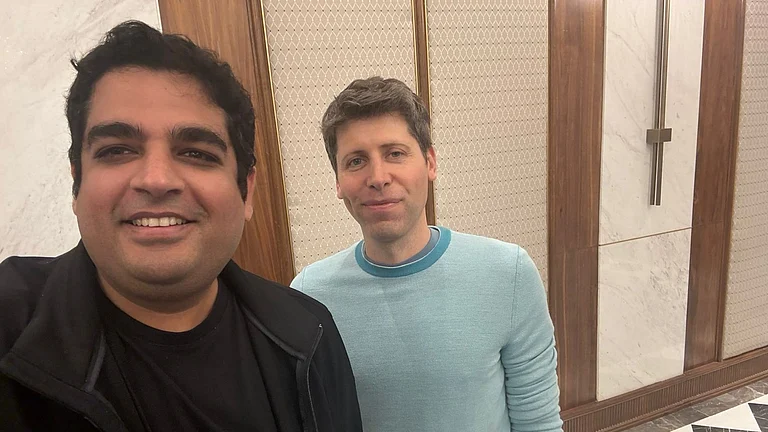The Reserve Bank of India's (RBI) out-of-turn rate hike earlier in May was only a teaser of India's worrying inflation story. April's inflation data released on 12th May indicates that the country's growth story faces several hurdles.
Soon after the inflation numbers for May came in, India's Finance Secretary, TV Somanathan, stated that the "economic growth rate is likely to slow if the central bank hikes interest rates," anticipating tough days ahead for the economy. His worry is akin to what governments across the world are concerned about.
Rising inflation, high unemployment and depreciating currencies have given birth to a vicious cycle that could very well dismantle the fragile recovery that economies were witnessing in a post-COVID world.
China, the second-largest economy in the world, is troubled, too. Observers point out that a year-on-year contraction of 11.1 per cent in its April retail sales, coupled with a 2.9 per cent contraction in industrial output, were clear indicators that the dragon economy was experiencing the text-book case of stagflation.
Stagflation is a state of economy defined by high inflation, low growth and high unemployment rate. And India seems to be at the cusp of this incident.
WORRYING TIMES AHEAD
Earlier this month, the US Federal Reserve announced its biggest interest rate hike in over two decades to control rising prices. It lifted the interest rate by half a percentage point, to a range of 0.75 per cent to 1 per cent. Inflation in the US is at a 40-year high, and steeper hikes are expected going forward.
Germany's April inflation was at a 41-year high of 7.40 per cent, and the United Kingdom's March inflation was at a 30-year high of 7 per cent. Italy's April inflation was at a 31-year high of 6.2 per cent.

In its April outlook, the International Monetary Fund (IMF) said, "War-induced commodity price increases and broadening price pressures have led to 2022 inflation projections of 5.7 per cent in advanced economies and 8.7 per cent in emerging market and developing economies—1.8 and 2.8 percentage points higher than projected last January."
CAN HIGH INTEREST RATES LEAD TO STAGFLATION IN INDIA?
India's Industrial Production (IIP) growth remained subdued at 1.9 per cent in March compared to an increase of 24.2 per cent a year ago, mainly on account of the low base effect. The IIP growth was 1.5 per cent in January and February amid the third Covid wave. It was just 1 per cent in November and December last year. With RBI expected to hike interest rates in the range of 50-100 basis points in the coming quarters, demand is expected to decline, forcing companies to bring down production further.
Sabyasachi Kar, RBI Chair Professor at the Institute of Economic Growth, downplays the fear of high-interest rates on growth. "There will be a dampening effect on growth. However, as long as it is restricted to rolling back the measures undertaken to deal with the pandemic, the dampening will be mainly due to fiscal consolidation and its effect on growth. This may not be a very large effect."
Unlike the West, which is not used to dealing with high inflation rates, India has worked out this phenomenon over the last two decades. With 80 crores of its population getting free foodgrain under the Centrally sponsored scheme, a large segment of the Indian population gets insulated from the high food prices.
Similarly, unlike China, India seems to have seen off the worst of Covid-lockdowns that had a negative impact on India's growth.
"India has great human resources and entrepreneurial capital and can grow at a decent pace if the government liberates the private sector, undertake deep seated public sector reforms and does not make major policy mistakes. RBI’s higher interest rates may impact growth marginally but there is no probability of India getting into stagflation” said Former finance secretary Subhash Garg.," said Former finance secretary Subhash Garg.
India recorded an 8.5 per cent growth in the second quarter of the last financial year, but it slowed down to 5.4 per cent in October-December 2021. According to the ministry of statistics and programme implementation, India's FY22 GDP growth is likely to be 8.9 per cent this year.
"We are not in a situation of stagflation as of now. The growth may come down from whatever was being projected earlier, but it is still likely to be closer to 7 odd per cent. Inflation is high because of multiple reasons. There would be some control on that front but to assume that it would come down to the RBI-mandated 4 per cent quickly, that would be unlikely," Devendra Pant, chief economist at India Ratings and Research, said.
THE RED FLAG
While things may look not so grim at the moment, India's growth had been tanking even before the pandemic. The RBI's low-interest-rate regime allowed the economy to come close to the Pre-pandemic level of private consumption.
But, fiscal expansion coupled with external factors has heated the Indian economy, which could wreak havoc. The government has pushed growth at the cost of small savers for long, and if prices are not controlled by making capital expensive, there could be an electoral backlash.
India's retail inflation is at an eight-year high. April's retail inflation came in at 7.79 per cent, up from 6.97 per cent seen in March. The price rise was seen across all major commodity groups. Inflation in cereals and products was at 21-months high, vegetables at 17-months high, and spices at 17-months high. Consumer food price inflation jumped to a 17-month high of 8.38 per cent.
The second-round impact of higher fuel prices has also started reflecting on other goods and services. Inflation for miscellaneous goods and services jumped to a 115-months high of 8.03 per cent. The category is witnessing 23 consecutive months above 6 per cent inflation. Inflation in health services has remained over 6 per cent for the last 16 months. Education inflation touched a 23-month high of 4.12 per cent in April.
To control food inflation, government has banned export of wheat from the country.
Garg believes that it’s one of those wrong policy moves that can affect India’s growth.
“From India will feed the world to asking WTO to permit wheat export procured at MSP to banning wheat export, India’s wheat policy has gyrated strangely over few weeks. As a consequence, farmers will lose opportunity to get higher prices and FCI will get a lot of wheat at MSP,” Garg had tweeted.
For the first time in over a decade, wheat farmers were getting higher than government decided MSP (Minimum Support Price) providing higher farm income. Agriculture supports 35-38 per cent of Indian workforce. Agriculture grew by 3.9 per cent in the last financial year on the back of good monsoon. It accounts for 19 percent of the GVA (gross value added). Exports of agricultural produce can fuel the rural economy, creating demand for automobile, FMCG and consumer durable products.
Latest IIP numbers reveal how badly India needs farm incomes to grow. Capital goods output, which is a barometer of investment, showed a growth of 0.7 per cent in March 2022 against a jump of 50.4 per cent in the year-ago month. The consumer durables segment was in the negative zone, showing a decline of 3.2 per cent against a growth of 59.9 per cent a year ago. These data sets indicate that investment and the resultant pickup in demand are yet to happen. And by halting exports, government may have let go of the opportunity to earn foreign exchange and boost consumption.
But inflation has breached the RBI-mandated upper limit. Risking inflation in wheat prices is not feasible in the current scenario.
Much against the initial expectations, the Russia-Ukraine war has lingered on for long. This has wiped out the supply of crude oil from the international market and other commodities like edible oil, coal, and metals. India does not want to find itself importing wheat from international market next year.
If prices don't come down within the next quarter, things may change for the worse. Kar cautions about inflation going out of hand, leading to extraordinary liquidity tightening by the RBI. "If exogenous inflationary shocks persist, and the RBI keeps increasing repo rates to bring down inflation at any cost, it would definitely hurt the private sector and lead to significant growth slowdown."
India's trade deficit widened in the first month of the current fiscal to $20.07 billion, an increase of over 30 per cent from last year. Barclays estimates India to have a record-high trade deficit of $ 250 billion in the current fiscal, putting pressure on the economy.
Rohit Azad, who teaches economics at Jawaharlal Nehru University, holds a definitive view on the challenges to the Indian economy in the coming quarters. "Absolutely (India can face stagflation). Even the last time RBI reacted in this manner in 2009 and 2011, it resulted in stagflation. And the reason is quite simple. Inflation is essentially cost-related. Crude and edible oil prices in the international market will not come down due to higher interest rates. That's why the process of an interest rate hike will negatively impact growth. We already have a slowdown, and if the interest rate is hiked on top of that, it would definitely throw the economy in a downward spiral," said Azad.
Nobody knows how long the Russia-Ukraine war will last. Inflation may come down drastically in India, If peace between the warring nations is brokered tomorrow, giving wings to the economy that it needed to fly in the Post-Covid world. But in case the situation remains the same or worsens, it would be difficult to believe that India can avoid stagflation, which appears to be the fate of many other economies.































